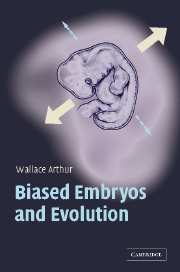Book contents
- Frontmatter
- Contents
- Preface
- Acknowledgements
- 1 The microscopic horse
- 2 What steers evolution?
- 3 Darwin: pluralism with a single core
- 4 How to build a body
- 5 A brief history of the last billion years
- 6 Preamble to the quiet revolution
- 7 The return of the organism
- 8 Possible creatures
- 9 The beginnings of bias
- 10 A deceptively simple question
- 11 Development's twin arrows
- 12 Action and reaction
- 13 Evolvability: organisms in bits
- 14 Back to the trees
- 15 Stripes and spots
- 16 Towards ‘the inclusive synthesis’
- 17 Social creatures
- Glossary
- References
- Index
1 - The microscopic horse
Published online by Cambridge University Press: 02 December 2009
- Frontmatter
- Contents
- Preface
- Acknowledgements
- 1 The microscopic horse
- 2 What steers evolution?
- 3 Darwin: pluralism with a single core
- 4 How to build a body
- 5 A brief history of the last billion years
- 6 Preamble to the quiet revolution
- 7 The return of the organism
- 8 Possible creatures
- 9 The beginnings of bias
- 10 A deceptively simple question
- 11 Development's twin arrows
- 12 Action and reaction
- 13 Evolvability: organisms in bits
- 14 Back to the trees
- 15 Stripes and spots
- 16 Towards ‘the inclusive synthesis’
- 17 Social creatures
- Glossary
- References
- Index
Summary
You ask me to describe a horse; I answer as follows. A horse is a microscopic animal that is incapable of movement. It consists of a rather small number of cells (a few hundred, as opposed to the trillions found in a human). These cells are not organized into sophisticated organ systems. The horse is a parasite of another animal, and so acquires its resources from its host. It is entirely incapable of acquiring energy in any other way. There is no fossil record of its existence, so for all we know there may have been no such thing as a horse before the dawn of the art age in the caves of France, where our forebears drew remarkably good pictures of horses, among other things.
But wait. Their horses don't look like my description. And indeed since my description at first sight looks quite mad you might wish to agree with the cavemen and not with me. There is, however, method in my madness. My description is fine. It just refers to a timeslice in the horse life cycle that is different from the one we normally picture in our minds at the mention of the word ‘horse’. We picture the adult, or if not this then perhaps a beautiful but unsteady newborn foal. What I have pictured is the horse as an early embryo, invisible to our view because it is implanted deep within its maternal host.
The point I am getting at here is that animals, and indeed all organisms, are four-dimensional things. The three dimensions of their bodies expand and change as they slide along that slippery and inevitable slope of time.
- Type
- Chapter
- Information
- Biased Embryos and Evolution , pp. 1 - 7Publisher: Cambridge University PressPrint publication year: 2004
- 1
- Cited by



